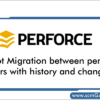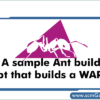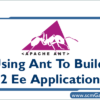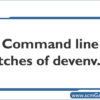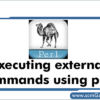
How to Execute external commands by using perl?
There are many ways to execute external commands from Perl. The most commons are: system function exec function backticks (“) operator open function All of these methods have different behaviour,…
Read more »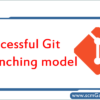
A Successful Git branching model | Git branching model Guide
I was reading article and thought to repost here. It focuses around Git as the tool for the versioning of all of our source code. Why git? For a thorough discussion…
Read more »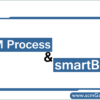
SCM Process and smartBuild Overview, What is SCM Process and smartBuild?
SCM Process and smartBuild SCM Process and smartBuild from Rajesh Kumar Rajesh KumarI’m a DevOps/SRE/DevSecOps/Cloud Expert passionate about sharing knowledge and experiences. I am working at Cotocus. I blog tech…
Read more »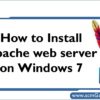
Apache web server Installation Guide, know how to Install Apache web server on Windows 7?
After a quick detour to install Notepad++, I’m on my way to installing Magento. Before I can get into the meat of it, though, I do require a few prerequisites….
Read more »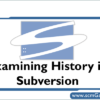
How to Examin History in Subversion (SVN)?
Examining History in Subversion Your Subversion repository is like a time machine. It keeps a record of every change ever committed and allows you to explore this history by examining…
Read more »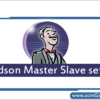
How to Setup Configure Hudson Master Slave? – Complete Guide
The tasks can be scheduled to run on the same machine (Master), or on a different machine (Slave). A master is a installation of Hudson, that can manage one or…
Read more »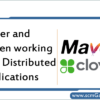
Clover and Maven working with Distributed Applications
1. Configure maven clover plugin. 2. Build the all components with clover enabled. 3. Deploy the clover enabled build to test server. 4. Run the tests. 5. Create & Review…
Read more »
How we reduced build time from 8 hours to 1 hour ? – Complete Guide
Situation For one of our clients, Build is taking 8 hours and nightly build is failing frequently. Test case execution is consuming more time than the compilation. Low confidence levels…
Read more »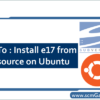
HOWTO: Install e17 from SVN/source on Ubuntu
E17 is a lightweight window manager/bundle of libraries for Unix based operating systems. E17 is designed to be both elegant and fast – two goals it succeeds at very well….
Read more »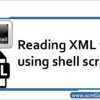
How to read XML file by using shell script ?
This was like the first time where I had to write something that will be able to read something out of a XML file using a shell script. Usually I…
Read more »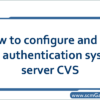
How to configure and use SSH authentication system server CVS
How to configure and use SSH authentication system server CVS cvs (Concurrent Version System) is a very popular version control tool. Although its function as Perforce, Subversion and other powerful,…
Read more »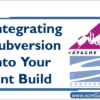
How to Integrate Subversion Into Your Ant Build ? – Step by step guide
SVNAnt SVNAnt is an Ant task allowing you to interact with Subversion within the convenience of your Ant build script. No more writing custom scripts to get the revision of…
Read more »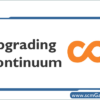
Upgrading Continuum – Continuum Upgradation Guide
This document will help you upgrade Continuum from 1.2.x to 1.3.3 and above. When upgrading Continuum, it could have some database model changes. Usually these changes will be migrated for…
Read more »
SSARC Utility & SSRESTOR Utility – Archive, Restore VSS Project – Guide
Question: How to Archive VSS Project in Visual Source Safe (VSS)? How to Restore VSS Project in Visual Source Safe (VSS)? What is SSARC Utility? What is SSRESTOR Utility? SSARC…
Read more »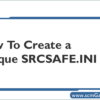
How To Create a Unique SRCSAFE.INI File ?
1. Create a new SRCSAFE.INI file and place it in the desired location. 2. If you want include the default SRCSAFE.INI in the unique copy, add the following line: #INCLUDE…
Read more »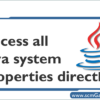
How to access all Java system properties directly?
You could access all Java system properties directly via ${name}, e.g. ${user.name}, ${user.dir}, ${user.home}, … You could read environment properties and use them <properties environment=”env”/> ${env.ENVIRONMENT_VARIABLE} e.g. …
Read more »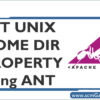
SET UNIX HOME DIR PROPERTY using ANT
Set properties HOMEDIR in build.xml which will be set through user logged in the current system.. Example: <project name=”test” default=”myhome”> <property environment=”env”/> <target name=”myhome”> <echo message=”My home…
Read more »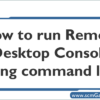
How to run Remote Desktop Console by using command line?
How to run Remote Desktop Console using command line If you may want to run Desktop Console from a batch file, for example RDC over VPN, you can use mstsc…
Read more »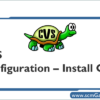
CVS Configuration Procedure – Install CVS – CVS Setup Guide
CVS Configuration – Install CVS Procedure #1:- Use rpm or up2date or yum command to install cvs: for Redhat Use:- rpm -ivh cvs OR# up2date cvs for fedora use:- yum…
Read more »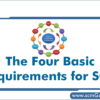
The Four Basic Requirements for SCM Process – SCM Guide
Identification, control, audit, and status accounting are the four basic requirements for a software configuration management system. These requirements must be satisfied regardless of the amount of automation within the SCM process. All four may be satisfied by an SCM tool, a tool set, or a combination of automated and manual procedures.
- Identification—Each software part is labeled so that it can be identified. Furthermore, there will be different versions of the software parts as they evolve over time, so a version or revision number will be associated with the part. The key is to be able to identify any and all artifacts that compose a released configuration item. Think of this as a bill of materials for all the components in your automobile. When the manufacturer realizes that there has been a problem with parking brakes purchased from a subcontractor, it needs to know all the automobile models using that version of the parking brake. It is the same with software. If we are building a multimedia system that has audio MPEG3 drivers for Windows 98, Windows 2000, Windows CE, Linux, and FreeBSD operating systems, how do we find out which releases are impacted when we find an error in the Linux product? You must go back to your SCM system to identify all the common components in all operating system releases that are impacted.
Read more »
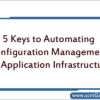
5 Keys to Automating Configuration Management for Application Infrastructure
5 Keys to Automating Configuration Management for Application Infrastructure
One of the trends being discussed in business, among vendors and in the analyst community is the importance of automating the functions performed by IT. Growing demands by the business, tight budgets and compliance pressures together accentuate the need for IT to be more agile, efficient and responsive to business stakeholders.
Naturally, vendors rush into this environment, each touting the unique benefits of its solution set and the urgency to move forward immediately. A key area targeted for IT automation is the area of ‘configuration management.’ As it relates to automating day to day IT functions, configuration management can mean many different things: patch management, server and network management or others.
Read more »
 Starting: 1st of Every Month
Starting: 1st of Every Month  +91 8409492687
+91 8409492687  Contact@DevOpsSchool.com
Contact@DevOpsSchool.com
